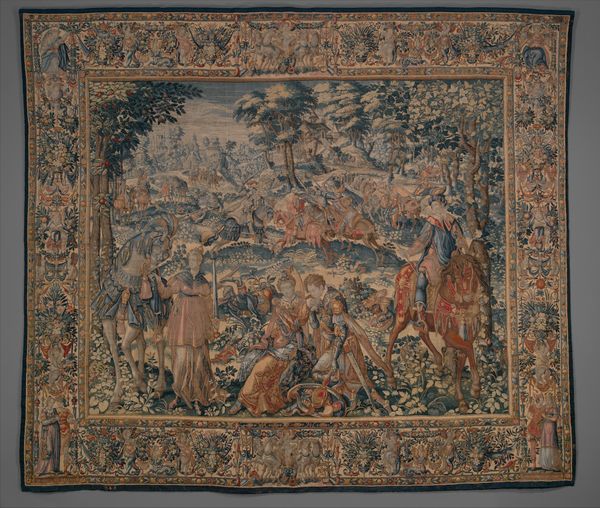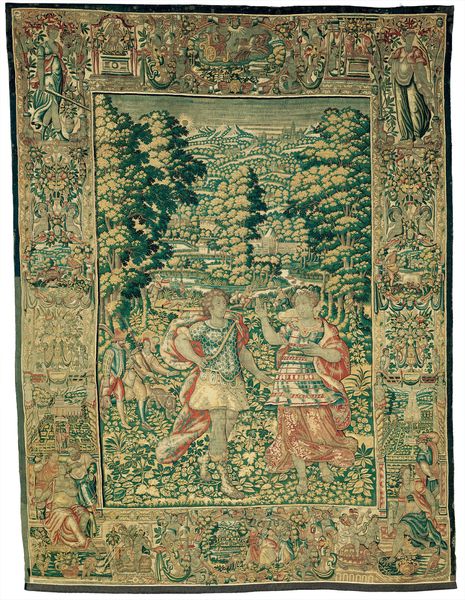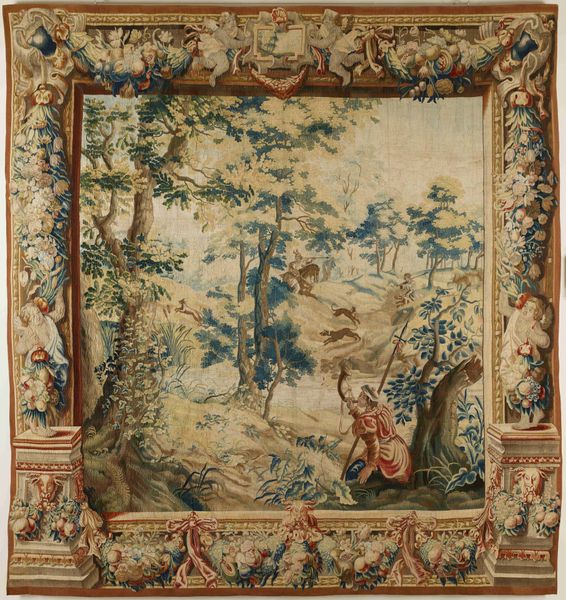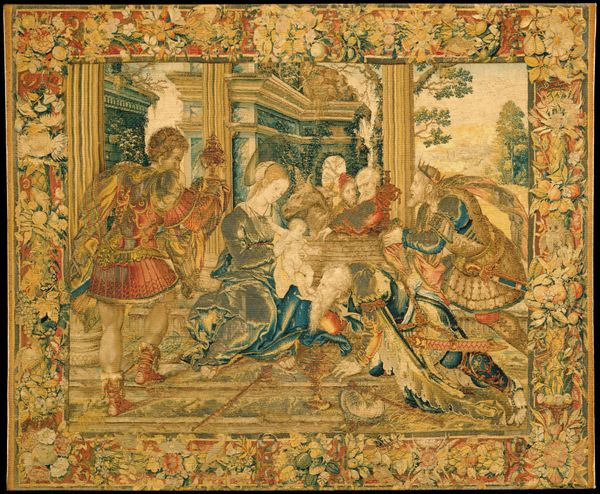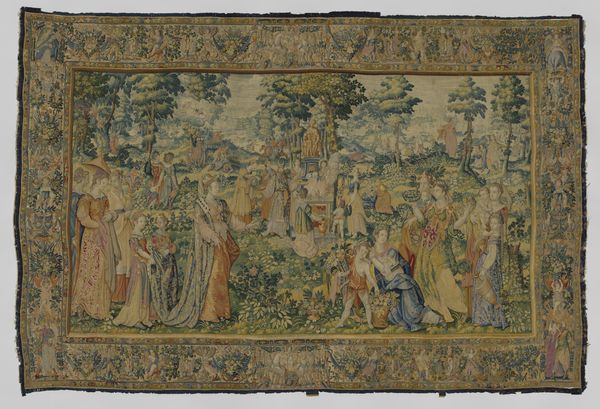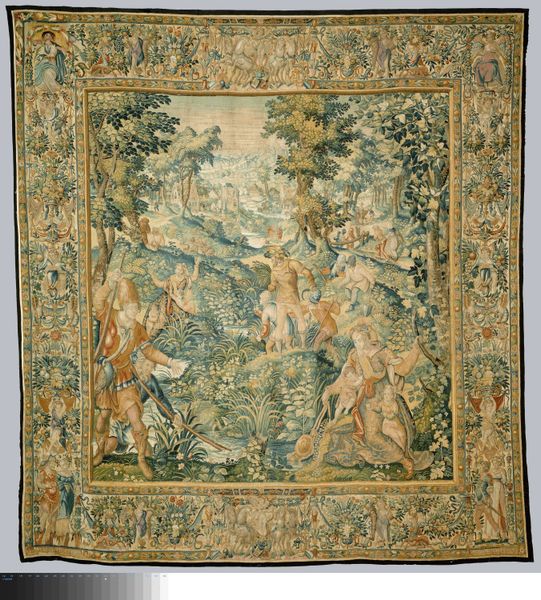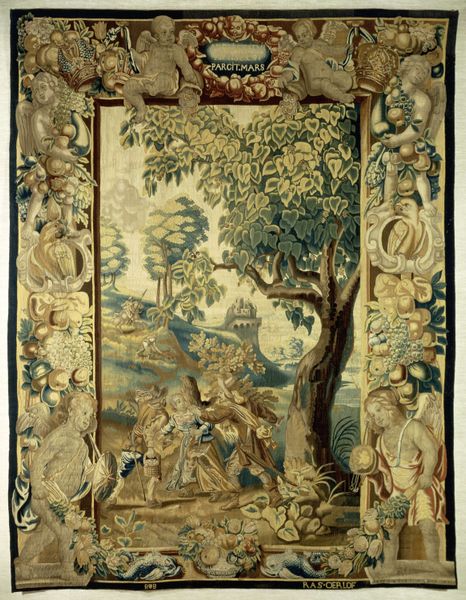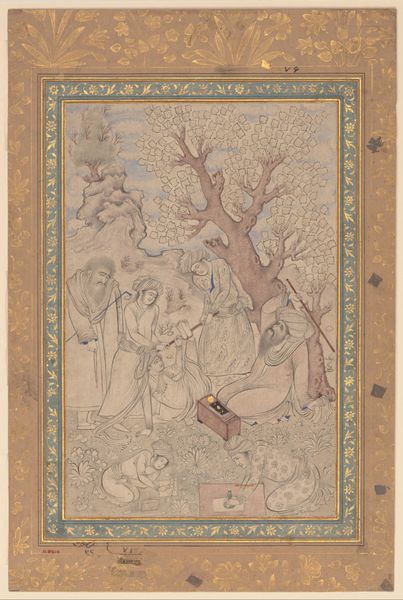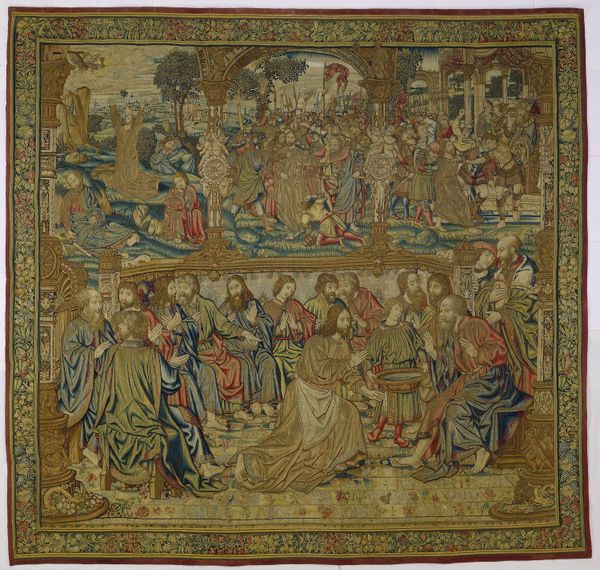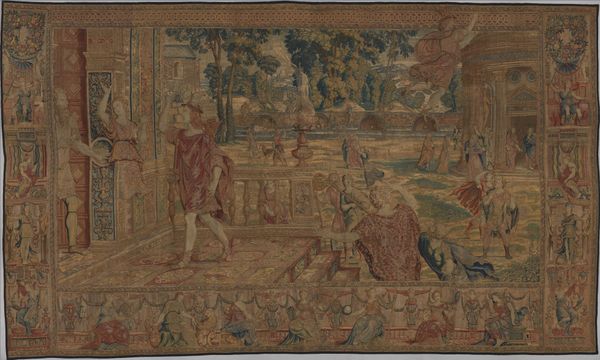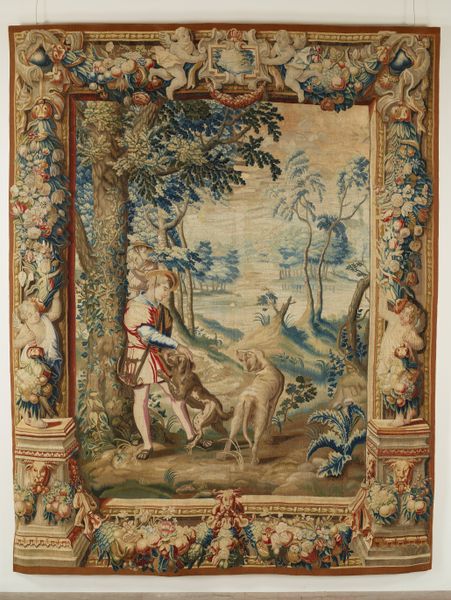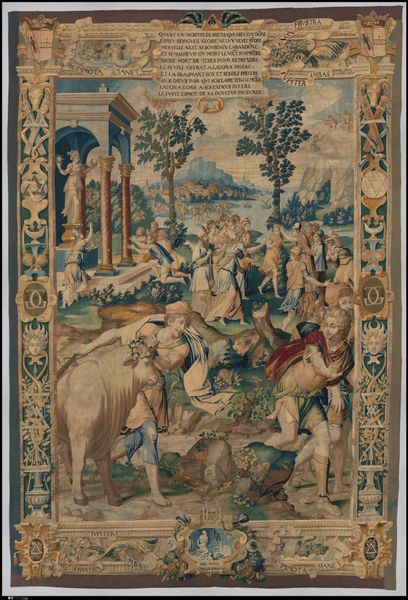
mixed-media, weaving, textile
#
mixed-media
#
narrative-art
#
weaving
#
landscape
#
textile
#
mannerism
#
earthy colours
#
dark colour palette
#
history-painting
#
mixed media
#
motif
Dimensions: height 360 cm, width 260 cm
Copyright: Rijks Museum: Open Domain
Curator: The artwork before us, created circa 1593 to 1600, is entitled "Tapestry with the Story of Jupiter and Callisto," attributed to François Spiering. It employs weaving and mixed media, characteristic of textile arts from that era. Editor: Oh, immediately, I’m struck by the overwhelming sense of secrecy here. The colors, that deep, muted palette, and the density of figures nestled in the forest. It feels…dangerous, maybe? Curator: Precisely! We're delving into a complex narrative, rendered in visual symbols that carried immense weight. It’s a visual retelling of a segment of the Callisto myth, heavy with implications of betrayal and transformation. Notice how the idyllic landscape cannot conceal the undercurrents of human frailty. Editor: The central group is incredibly captivating, if unsettling. It’s hard to miss the fraught embrace taking place in the heart of the scene—is that Jupiter disguised? The composition really holds the eye there with those twisting forms. Curator: Your intuition serves you well! Yes, that's Jupiter, whose deceit precipitates Callisto's downfall. Beyond its aesthetic appeal, tapestries served as potent political tools and domestic decor. Each woven motif acts as a silent witness, encapsulating prevailing societal views on power and destiny. Editor: Considering how common tapestries were, there's something very profound about elevating storytelling to an everyday art. It’s like an ancient soap opera hanging on the wall, influencing thoughts almost subliminally! Curator: A superb point! The tapestry operates as both a piece of craftsmanship and cultural mirror reflecting societal mores of that era. And bear in mind this piece stems from a Mannerist lens. It distorts naturalism and heightens emotional intensity. Editor: So it’s not merely decoration or narrative, but really, a kind of encoding? A layered communiqué that uses artifice to hint at darker truths. This definitely requires deeper reflection… perhaps in a darker room. Curator: An intriguing note to conclude! The power of images resonates throughout epochs; even simple tapestries offer resonant psychological truths. Editor: Indeed, and I suspect this “simple” tapestry might be telling its secrets long after we depart. A testament to art that can really snag you!
Comments
No comments
Be the first to comment and join the conversation on the ultimate creative platform.

